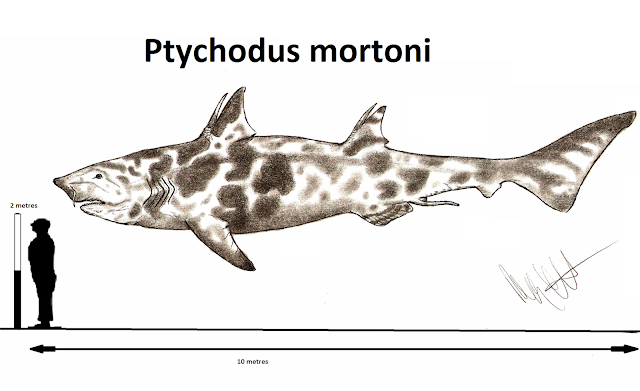Yesterday we went over a bit of the development of sharks and discussed an early group of sharks that has persisted since the dawn of recognizable sharks and their jaw arrangements. Today we are going to look at a Cretaceous era group of sharks in the genus Ptychodus. These sharks possessed interesting teeth that would not be recognizable as shark teeth but were efficient and crushing and smashing food items, specifically large bivalves and crustaceans. Large numbers of the fossils of Ptychodus are known from the middle of North America in what was, during the Cretaceous, the Western Interior Seaway, but the distribution of Ptychodus species (22 species overall) is truly global. Part of the reason that large numbers of these fossils are known from the Western Interior Seaway is that this area, encompassing what is now the dry land stretching from the Gulf of Mexico to the Arctic Circle, is thought to be the last "stronghold" of Ptychodus sharks before their extinction around 85 million years ago.
The teeth of the Ptychodus sharks are peculiar, for a shark, as I noted above. Rather than individual conical, spiny, or serrated wedge shaped teeth, Ptychodus sharks possessed large crushing plates. These plates were known as early as 1822 from the Mantell illustrations by Mary Ann Mantell and likely could have been known earlier than this, but without published scientific scrutiny. The plates consist of multiple lobed projections and would have been used to crunch down on the shells of the sharks food items. In any kind of territorial battles it could have been used to bite down and crush other Ptychodus fins and bodies as well. My hypothesis is that being bitten by this shark would feel something like slamming one's hand in a car door. Or possibly more like being hit by a meat tenderizer. Regardless, it would likely hurt.



No comments:
Post a Comment